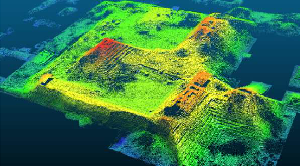
We have written several articles about various forms of LIDAR and the laser requirements needed to ensure a successful application. In this article, we are going to compile and briefly review some of this previously covered material. Then we will cover some benefits of choosing compact fiber lasers over some of the other options for your LIDAR application.
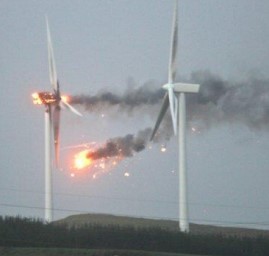 Doppler LIDAR is growing in popularity, for instance, in wind farms, where the rapid detection of extreme weather changes can prevent damage to the wind turbine. Traditional anemometer/wind vane devices are too slow to report drastic weather changes in time to avoid damage. Alternatively, implementing a network of single-frequency Doppler LIDAR sensors around a wind farm, in conjunction with highly accurate wind models, allows for much higher accuracy wind speed readings and faster response times. This rapid access to accurate data provides time to adjust the blade angle to optimize the efficiency without overloading the turbine. For more detailed information on this specific application, check out our previous whitepaper titled: “Laser Requirements for Wind Turbine Monitoring LIDAR Systems.” For more detailed technical aspects on the ambiguity function and its relationship to the range and velocity measurements for this application, consider another whitepaper titled: “Single-Frequency Fiber Lasers for Doppler LIDAR.” You may also find this “Automotive LIDAR” blog helpful and informative.
Doppler LIDAR is growing in popularity, for instance, in wind farms, where the rapid detection of extreme weather changes can prevent damage to the wind turbine. Traditional anemometer/wind vane devices are too slow to report drastic weather changes in time to avoid damage. Alternatively, implementing a network of single-frequency Doppler LIDAR sensors around a wind farm, in conjunction with highly accurate wind models, allows for much higher accuracy wind speed readings and faster response times. This rapid access to accurate data provides time to adjust the blade angle to optimize the efficiency without overloading the turbine. For more detailed information on this specific application, check out our previous whitepaper titled: “Laser Requirements for Wind Turbine Monitoring LIDAR Systems.” For more detailed technical aspects on the ambiguity function and its relationship to the range and velocity measurements for this application, consider another whitepaper titled: “Single-Frequency Fiber Lasers for Doppler LIDAR.” You may also find this “Automotive LIDAR” blog helpful and informative.
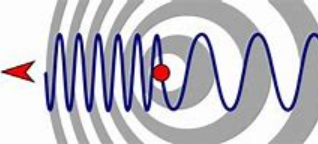 As we covered extensively in “Single-Frequency Fiber Lasers for Doppler LIDAR,” if you want to measure both the speed at which an object is moving and its location, there is no better option than frequency modulated (FM) LIDAR. For this signal processing methodology to work, you need to maintain precise control over the laser frequency. While a wide variety of single-frequency lasers have been used in Doppler LIDAR research, the industry as a whole has adopted picosecond and short-nanosecond pulsed, single-frequency fiber lasers as the ideal light source.
As we covered extensively in “Single-Frequency Fiber Lasers for Doppler LIDAR,” if you want to measure both the speed at which an object is moving and its location, there is no better option than frequency modulated (FM) LIDAR. For this signal processing methodology to work, you need to maintain precise control over the laser frequency. While a wide variety of single-frequency lasers have been used in Doppler LIDAR research, the industry as a whole has adopted picosecond and short-nanosecond pulsed, single-frequency fiber lasers as the ideal light source.
Fiber lasers have a few advantages compared to traditional DPSS lasers, some of which are derived from the fiber optic geometry, namely the innate ability to have an extremely long single-mode optical cavity. This geometry produces either extremely high-power, single-mode lasers producing unprecedented brightness or extremely narrow band lasers with near-perfect single-frequency output. Most fiber lasers are erbium (Er) doped and lase at approximately 1550 nm, which corresponds to the peak absorption band of water, making them “eye-safe,” which is critical for the deployment of any practical lidar system. While single-frequency, continuous-wave fiber lasers are ideal for Doppler lidar, it’s worth noting that fiber lasers can also be q-switched or mode-locked to produce high peak power, high energy, and narrow linewidth pulsed lasers. Pulsed fiber lasers are widely deployed in range finding and 3D mapping LIDAR systems. These fiber lasers tend to be more compact, lightweight, cheaper, and consume less energy than their DPSS counterparts
Here at RPMC Lasers, we offer a wide assortment of 1-micron and 1.5-micron CW and pulsed fiber lasers and fiber amplifiers from BKtel, which are ideal for FM LIDAR especially applications in the automotive (self-driving cars) and wind farm (windspeed monitoring) industries. All of the lasers produced by BKtel are compliant with all Telcordia requirements and are beyond rugged, with operating temperatures ranging from -40oC to +65oC.
See Our 1µm & 1.5µm Fiber Lasers & Amplifiers
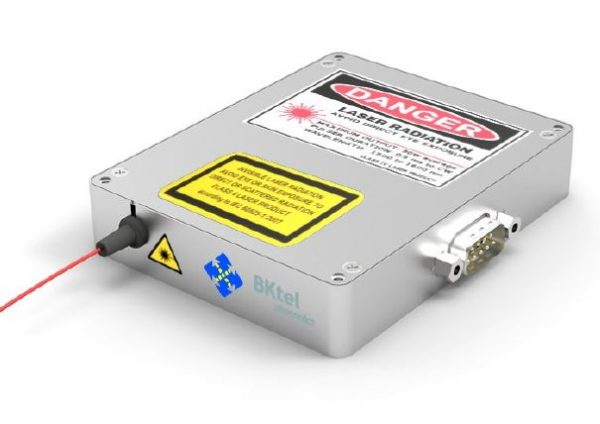
One example of an ideal CW single-frequency fiber laser for lidar is the LRL2, shown in figure 1, from BKtel. The laser provides a perfect TEM00 output beam with up to 1W of output power and a narrow linewidth of 10 kHz. The LRL2 is exceptionally stable, with ambient temperature fluctuations having a wavelength drift of only 0.1pm/oC and extremely low relative intensity (RIN) noise, as shown in the graph below. Not only are the optical characteristics of this laser ideal for LIDAR signal generation; its compact (120 mm x 100 mm x 20 mm), energy efficient (<30W power consumption with a 12V DC power supply), and rugged design make it ideal for integration in LIDAR systems in the harshest of environments.
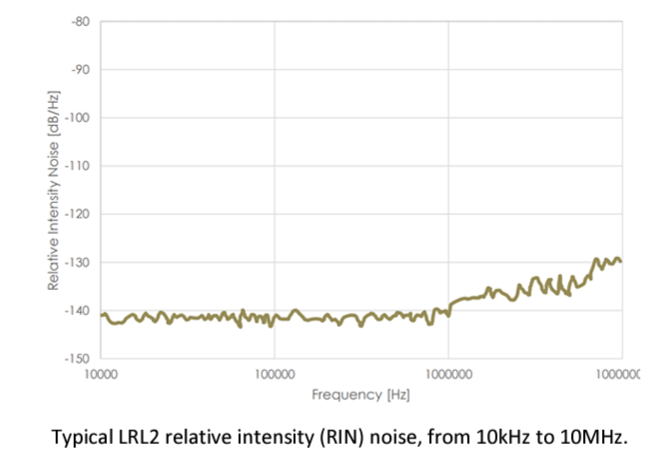
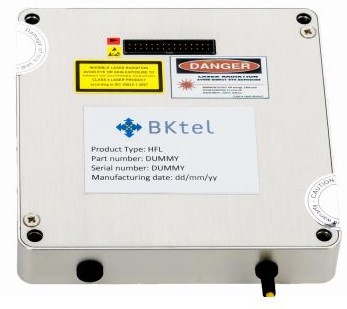 Another example of a BKtel fiber laser, which is excellent for lidar applications, is the HFL series of 1550 nm high-power pulsed fiber lasers. These lasers can produce 4 W of average power with a 400ps pulse width and a pulse repetition rate of up to 1MHz. This high-power short-pulse laser is excellent for precision time-of-flight (TOF) measurements of stationary targets over vast distances, for example, in aerial ground mapping applications. Lastly, it is essential to mention BKtel’s fiber amplifiers, such as the UHPOA-L ultra-high-power optical amplifier, which offers up to 10 W of output power with only 0.5ps of mode dispersion, making it an ideal solution for long-range TOF lidar applications.
Another example of a BKtel fiber laser, which is excellent for lidar applications, is the HFL series of 1550 nm high-power pulsed fiber lasers. These lasers can produce 4 W of average power with a 400ps pulse width and a pulse repetition rate of up to 1MHz. This high-power short-pulse laser is excellent for precision time-of-flight (TOF) measurements of stationary targets over vast distances, for example, in aerial ground mapping applications. Lastly, it is essential to mention BKtel’s fiber amplifiers, such as the UHPOA-L ultra-high-power optical amplifier, which offers up to 10 W of output power with only 0.5ps of mode dispersion, making it an ideal solution for long-range TOF lidar applications.
For detailed technical specifications on the products we offer from BKtel click here or talk to one of our knowledgeable Product Managers today by calling 1-636-272-7227, or by clicking the link below!

 SHIPS TODAY
SHIPS TODAY 